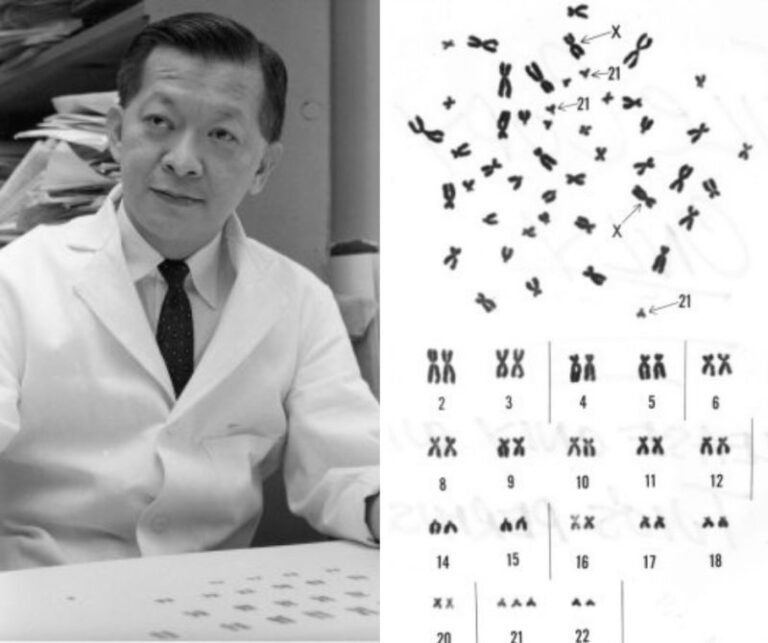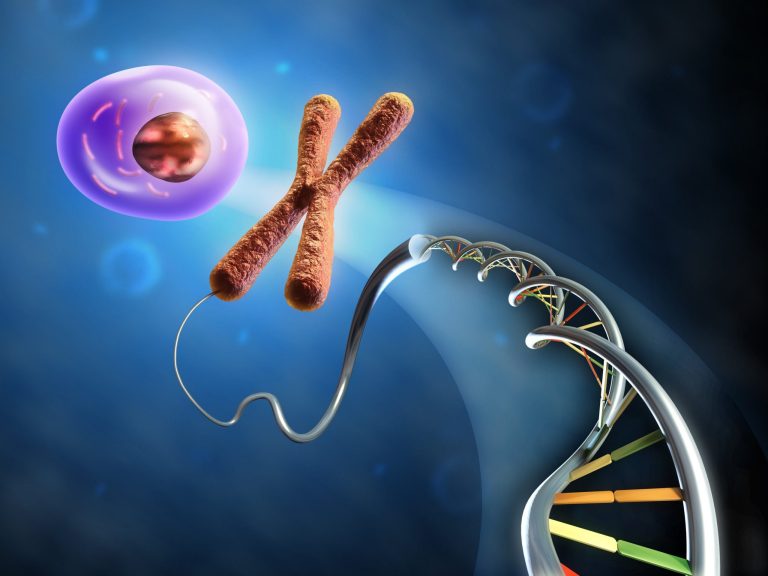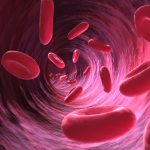What are chromosomes?
Chromosomes are threadlike structures consisting of protein and a single molecule of DNA that carry hereditary information in the form of genes. Each chromosome is made up of DNA tightly coiled many times around proteins called histones that support its structure.
In plants and animals (including humans), chromosomes are found in the nucleus of cells. When a cell is not dividing, chromosomes are not visible in the nucleus, even under a microscope. During cell division, however, the DNA that makes up chromosomes becomes more tightly packed and is then visible under a microscope.
A defining feature of any chromosome is its compactness. The chromosomes in human cells, for example, have a total length of 200 nm (1 nm = 10 -9 meter); if the chromosomes were untwisted, the genetic material they carry would be around 2 meters (6.5 ft) long. The compactness of chromosomes plays an important role in helping to organize genetic material during cell division and enabling it to fit inside structures like the nucleus of a cell, which has an average diameter of about 5 to 10 μm.
How many chromosomes do humans have?
You’ve probably come across Dr. Joe Hin Tjio’s research if you’ve read a biology textbook. Dr. Tjio (pronounced CHEE-oh) was an Indonesian cytogeneticist (a professional who specializes in the study of chromosomes and the structure and function of the cell) who was the first to determine the right number of chromosomes in humans.

When Dr. Tjio correctly counted the number of chromosomes, the nature and functions of chromosomes, the agents of heredity, was known. However, studying human chromosomes under a microscope had always proved more difficult than studying those of other species. He was researching whether chromosomal anomalies were linked to malignant growth in 1955, but the number of human chromosomes was under debate. At the time, scientists had long assumed that each body cell had 48 chromosomes, but Dr. Tjio disagreed.
He photographed a lung cell in metaphase with perfectly distributed chromosomes to prove his theory. Dr. Tjio employed a sophisticated technology to separate the chromosomes of embryonic lung tissue on glass slides and discovered that the true figure was 46. The photograph clearly showed 46 human chromosomes, laying the groundwork for chromosome study.
Many years later, he said, “The number was merely an inadvertent finding.” He kept studying chromosomes for clues to some of the most puzzling and devastating human diseases.




